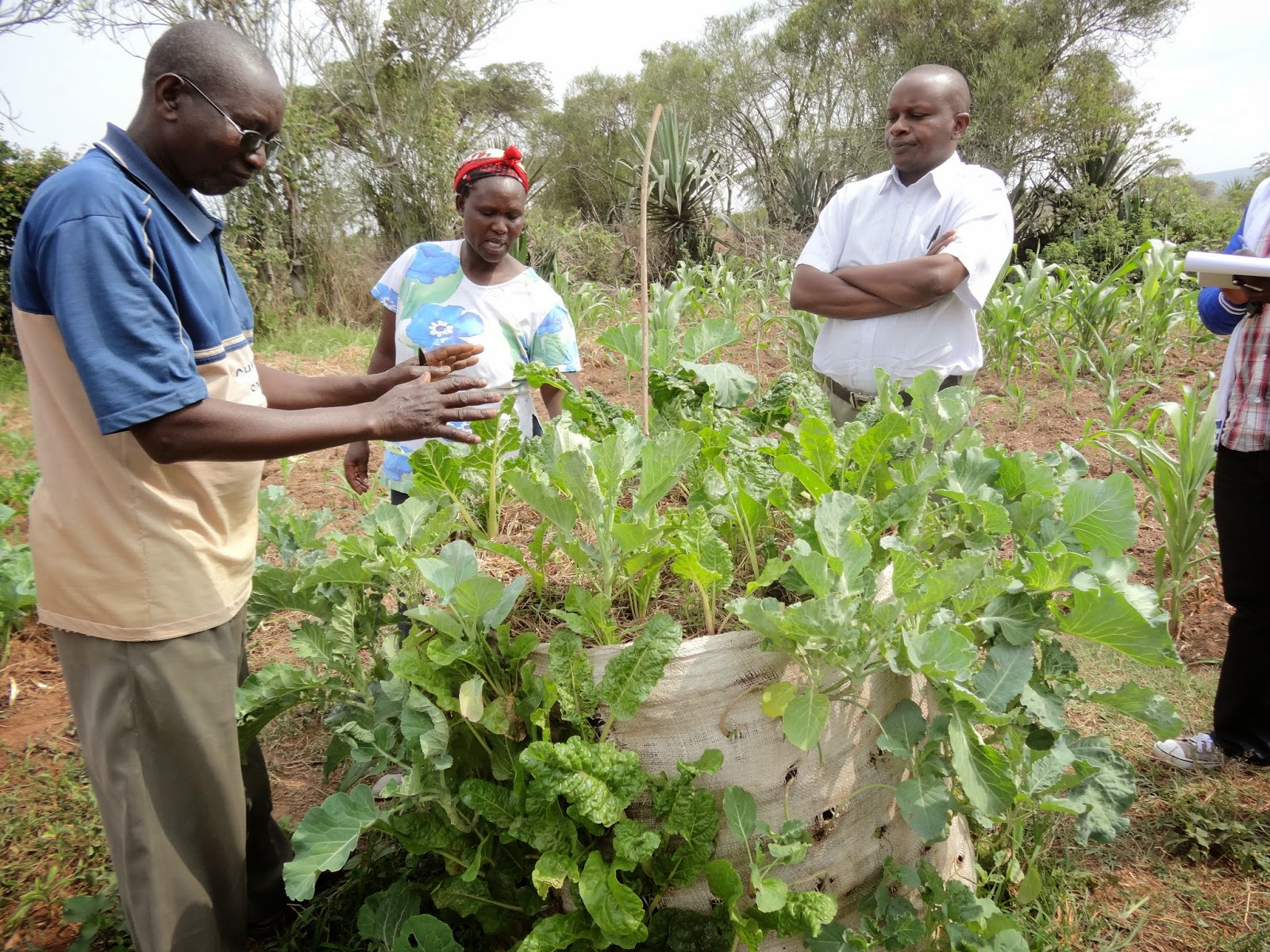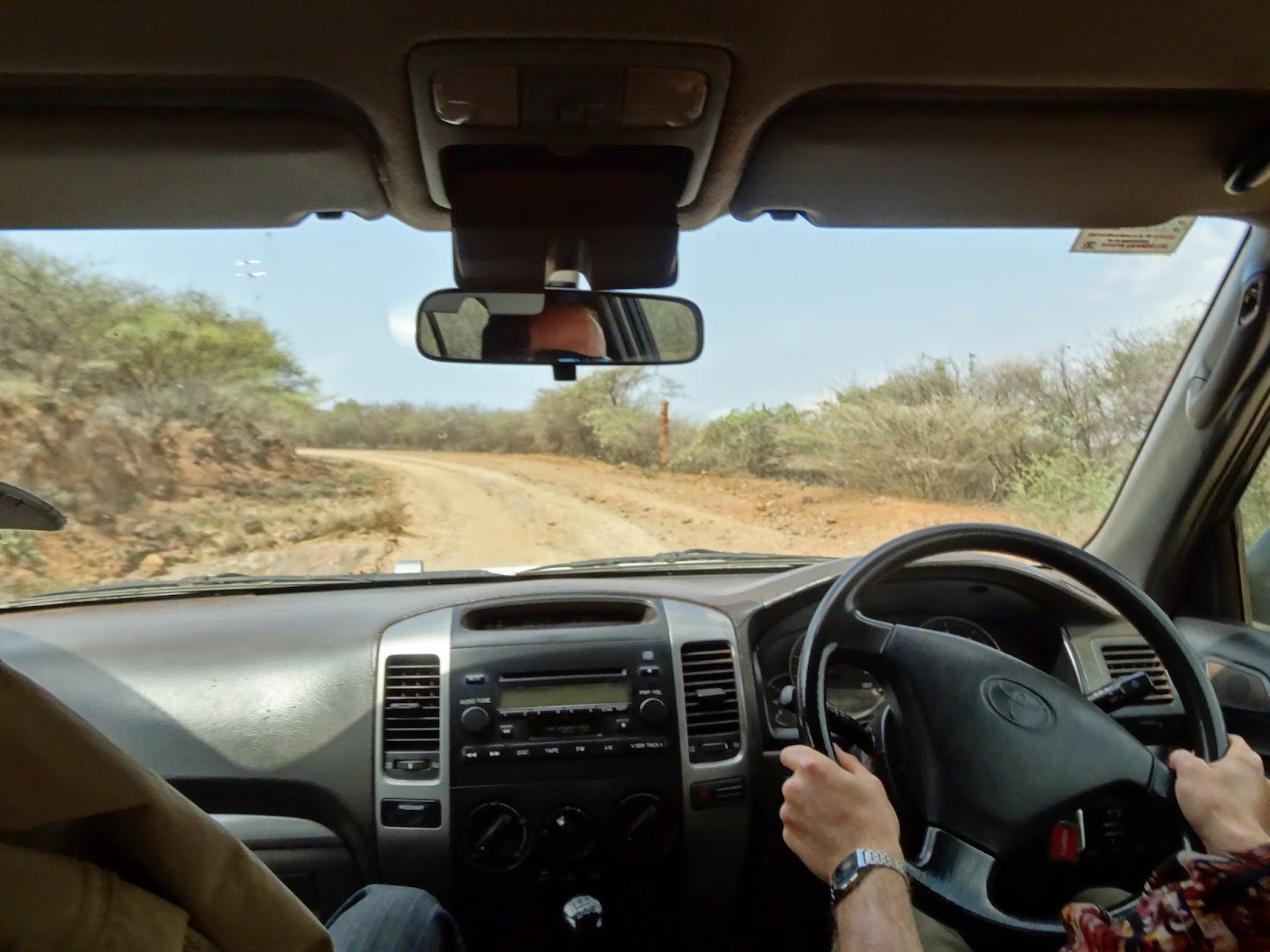To continue the story of our visit to Tanzania and Kenya, here are some reflections from the part in Kenya. We drove on lots of winding, steep roads up and down the mountains in Western Kenya. It was refreshingly cool. At one point, the temperature outside was 13°C!
Here are a couple crazy things we saw going on on the roads:
There are lots of brightly colored tea plantations in Kenya too.
In the area of Kenya where we visited, World Renew is working with the Anglican Church's development organization. With them, we had fun visiting some individual farmers at their homes and hearing what they have been doing. The first area we visited was around Nakuru. The people we visited were the lead farmers in farmer groups, chosen by the members of their groups to pilot these techniques. They were mainly focusing on growing more and better vegetables for family consumption and for sale. So, one technique they used was to make "wet gardens." They took sacks, sewed them in a circle, and put a perforated pipe down the middle and filled the sack with soil. You can transplant vegetables all over the sack and then water by pouring water into the pipe that goes down the middle of the garden, from the top to the ground. It is very productive and they can grow more vegetables on less space and with less water, using this technique.
They are also using a gravity-fed drip irrigation system. All of the parts are available in Nakuru, so they can fix the system if it breaks.
The water comes from a pond that they dug and lined with the material used for greenhouses. They use a hand pump to pump that water into the tank on their irrigation system.
The farmers we visited are living on land that used to be part of a big sisal plantation. The land was divided up and given to the families of the people who used to work on the plantation. Sisal looks kind of like yucca and the fibers from the leaves are used to make rope. The sisal factory is still going now, but on a much smaller scale. We passed by it and you can see them carrying the leaves and drying the fibers in the photo below.
One of the farmers we visited has come up with the idea of using the waste from the sisal factory for mulch in his garden. He asked the factory if they would give it to him and they did. So he used it to mulch the watermelon that he planted. There is a huge market for fruit, so he will be able to make a lot of money from selling the watermelons when they are ready.
The farmers have also been starting their seedlings in nursery beds, like the farmers I've been working with in Uganda.
The second day of visits to the Anglican development work, we went north to Baringo, in East Pokot. On the way, we stopped by the area where the Anglican church had their offices. They were on a lake, but the water level has risen over past years and destroyed their buildings.
The climate and area of Baringo is very different from other places we visited. It was much drier and filled with lots of acacia trees. The people there have traditionally been pastoral, herding animals, but in recent years, since they can't migrate as easily during the dry season, people have been relying on food aid during such times.
However, the community that we visited has been trying out agriculture to support themselves. For example, they have planted a variety of crops, not just maize, have planted indigenous species of grass that they can sell for people to feed their animals, started beehives, and learned better techniques for storing food so they could hold on to their maize harvest and sell it when the price is good. Unfortunately, this year there has been a serious drought. The next chance to plant is April and there are people (farmers) who are already going without food or eating only once per day. We visited the farm of one of the model farmers. Her farm is the best in the area, but already things are drying up and if it doesn't rain, she will probably lose the whole harvest.
She had also dug a pit for storing water for irrigation, but the water is all gone. It's hard to see the scale in this picture but the pit is probably twenty feet deep.
Despite these serious hardships, the community group told us about all the ways their lives have improved in the last seven years, since the Anglican development organization started working with them. They used to have less than 1% of their children in school, but now it is over 50%. They used to have only one church in the community, with less than 50 people there on Sunday, but now there are seven churches, all with many attenders.
With the help of the Anglican development organization, they built a borehole for the community, which is the only one for 20 km around. It had to go 140 meters deep to get to water. In the picture below, you can see the spouts on the right where people get water and the building on the left that houses the generator to run the pump. This pump broke at one time, but a group within the community is in charge of caring for it, so they paid for fixing it themselves.
We heard about how the community members used to steal livestock from neighboring tribes, but now they are the ones who are initiating peace in conflicts, rather than causing it. They told us that now they have the power to improve their own lives in the future. Their goal for the future is to form an overarching community group that has the ability to give loans to the smaller groups so they can move ahead with the different project ideas that they have.
It was so encouraging to hear about how empowered they feel, but also heartbreaking because even with all their hard work, they are going hungry because of drought, which they cannot control. We pray that God will provide them with rain and help them to hold on to the hope that they have gained through the transformation they have already achieved in their community.


















Praying with you for rain!!!
ReplyDelete